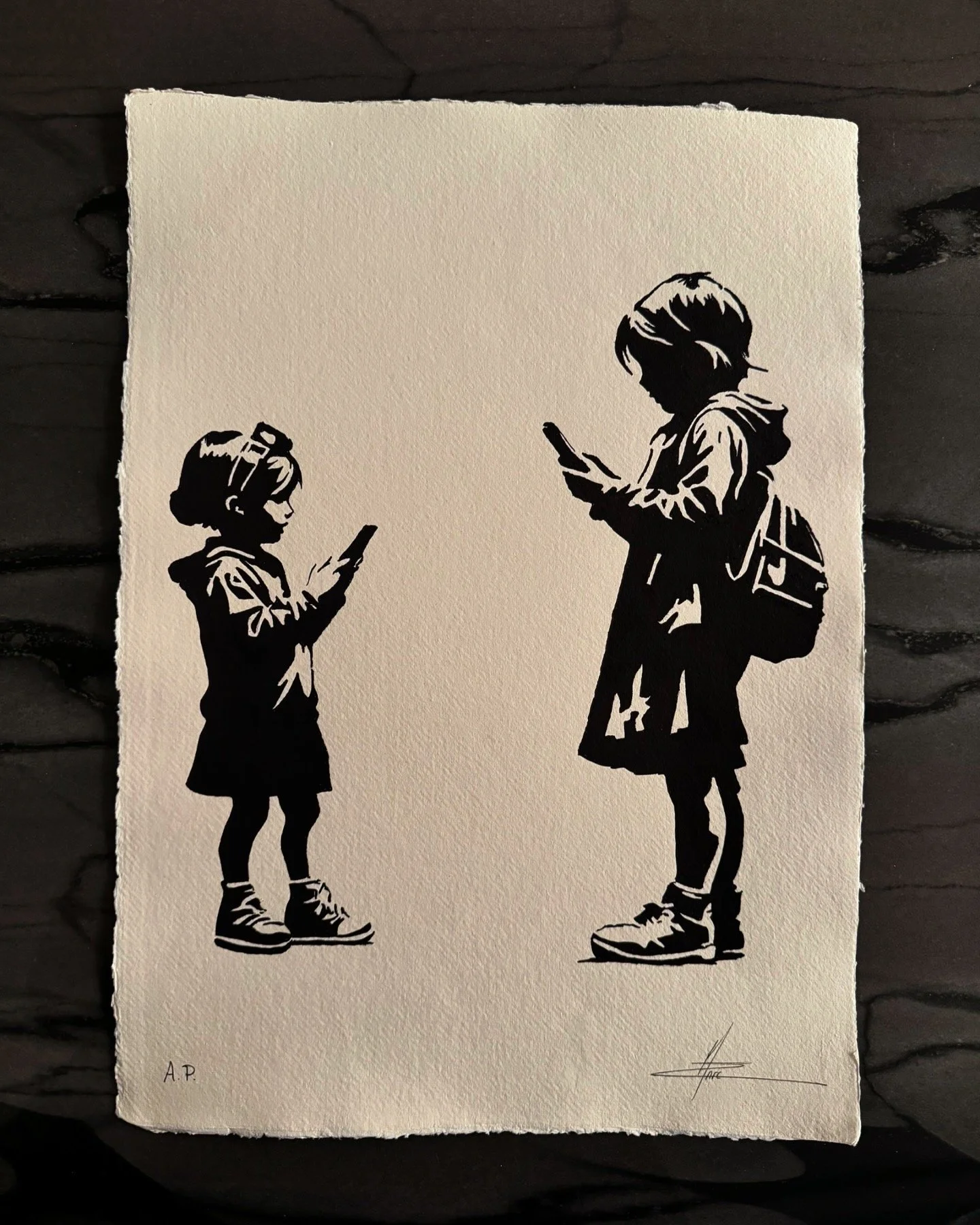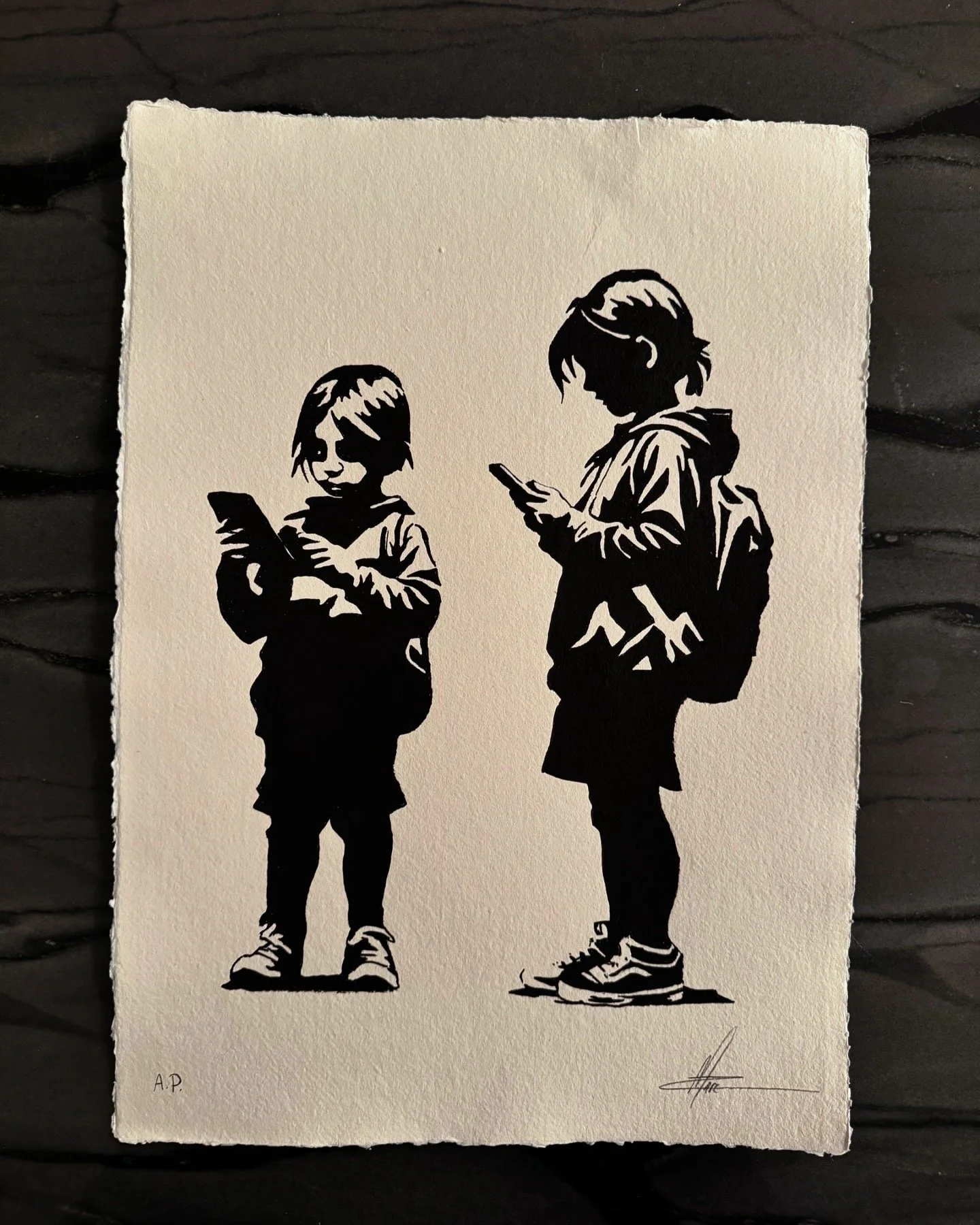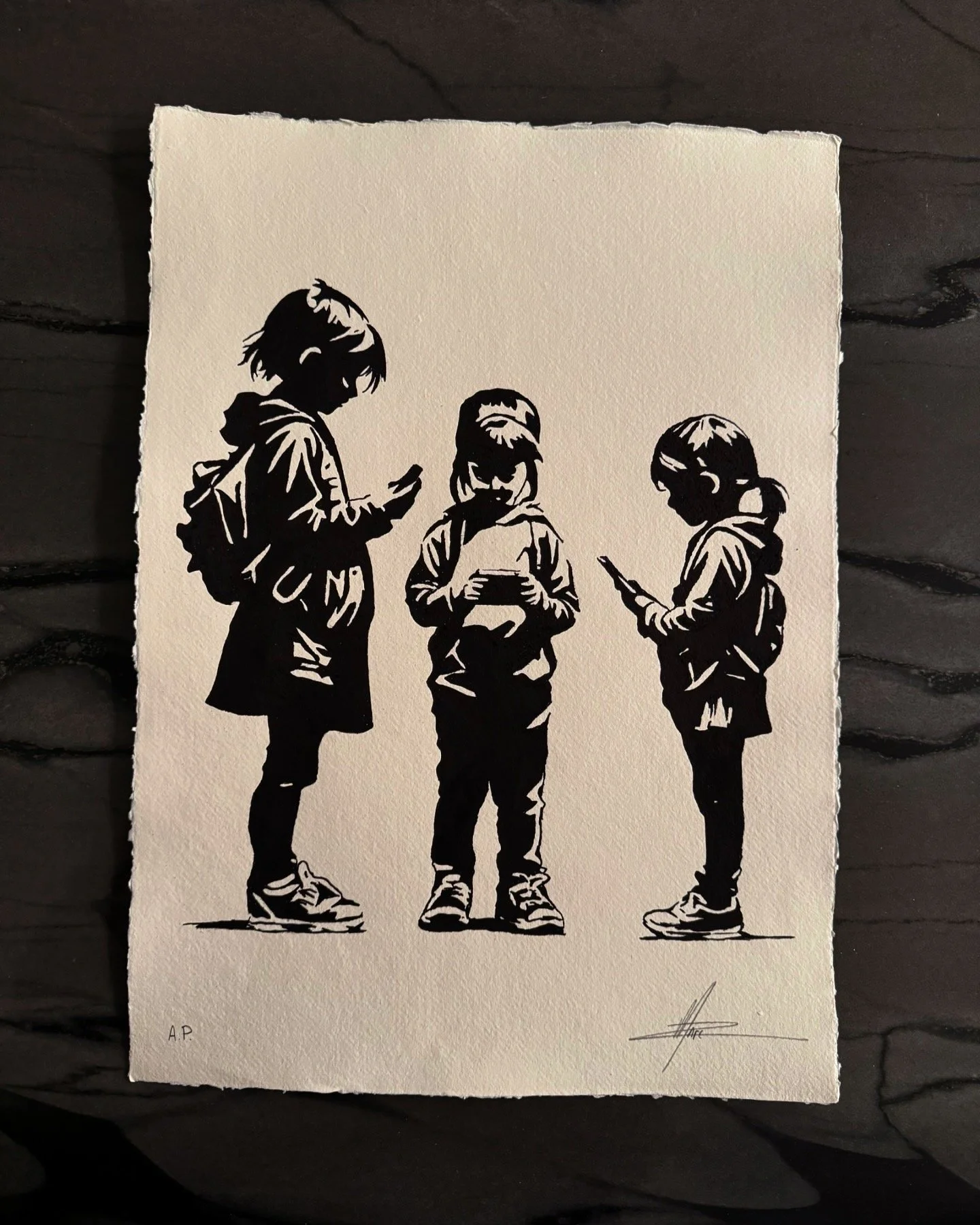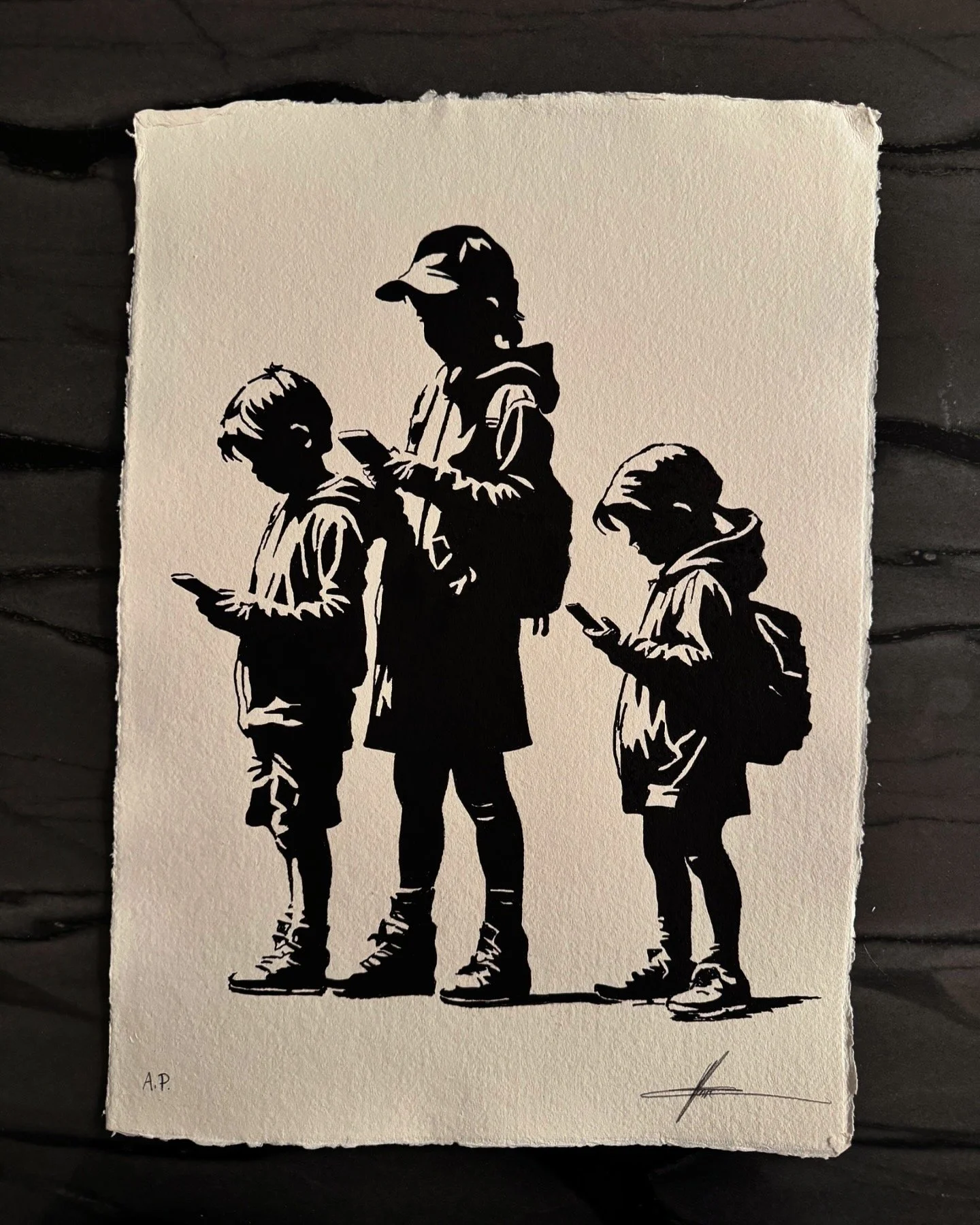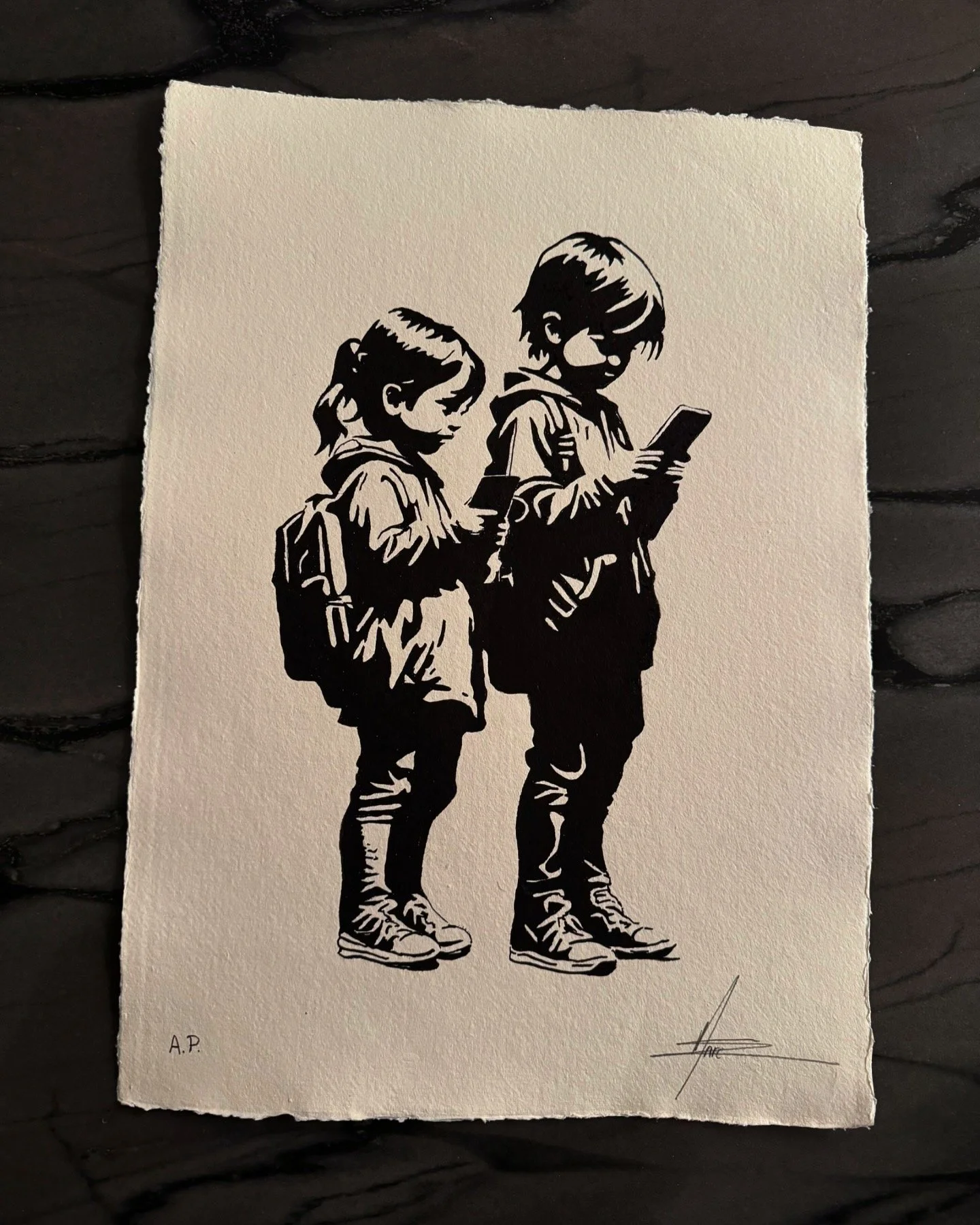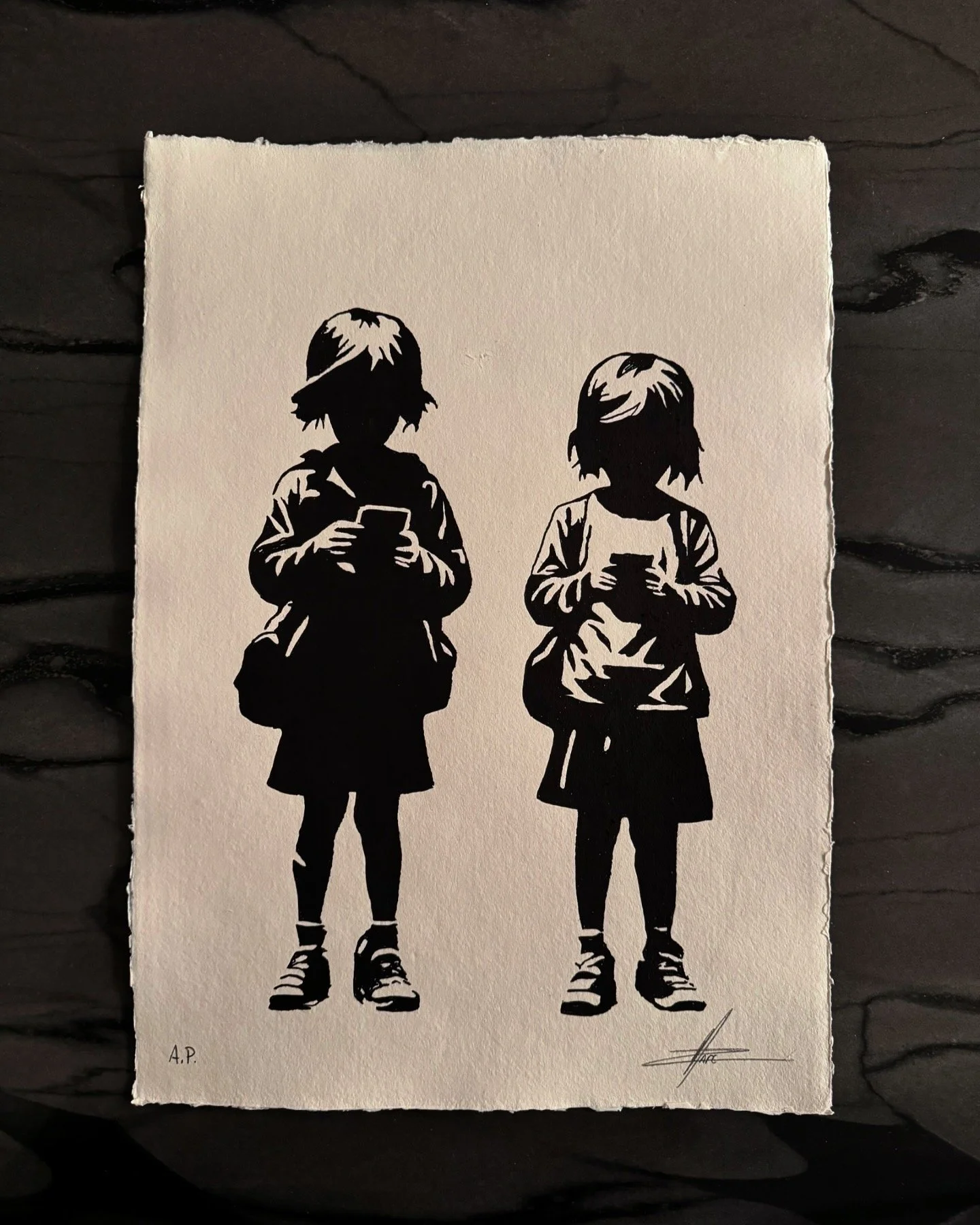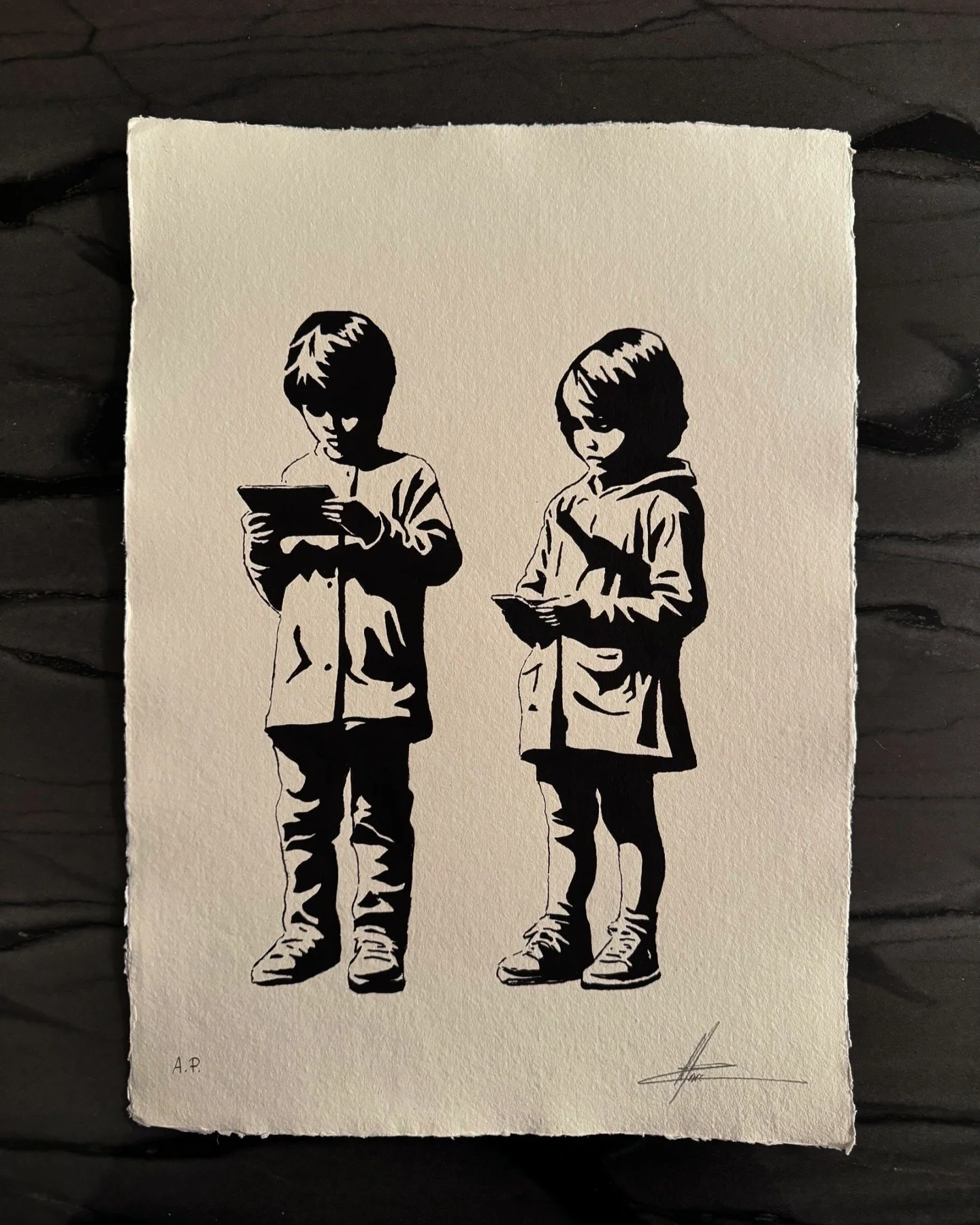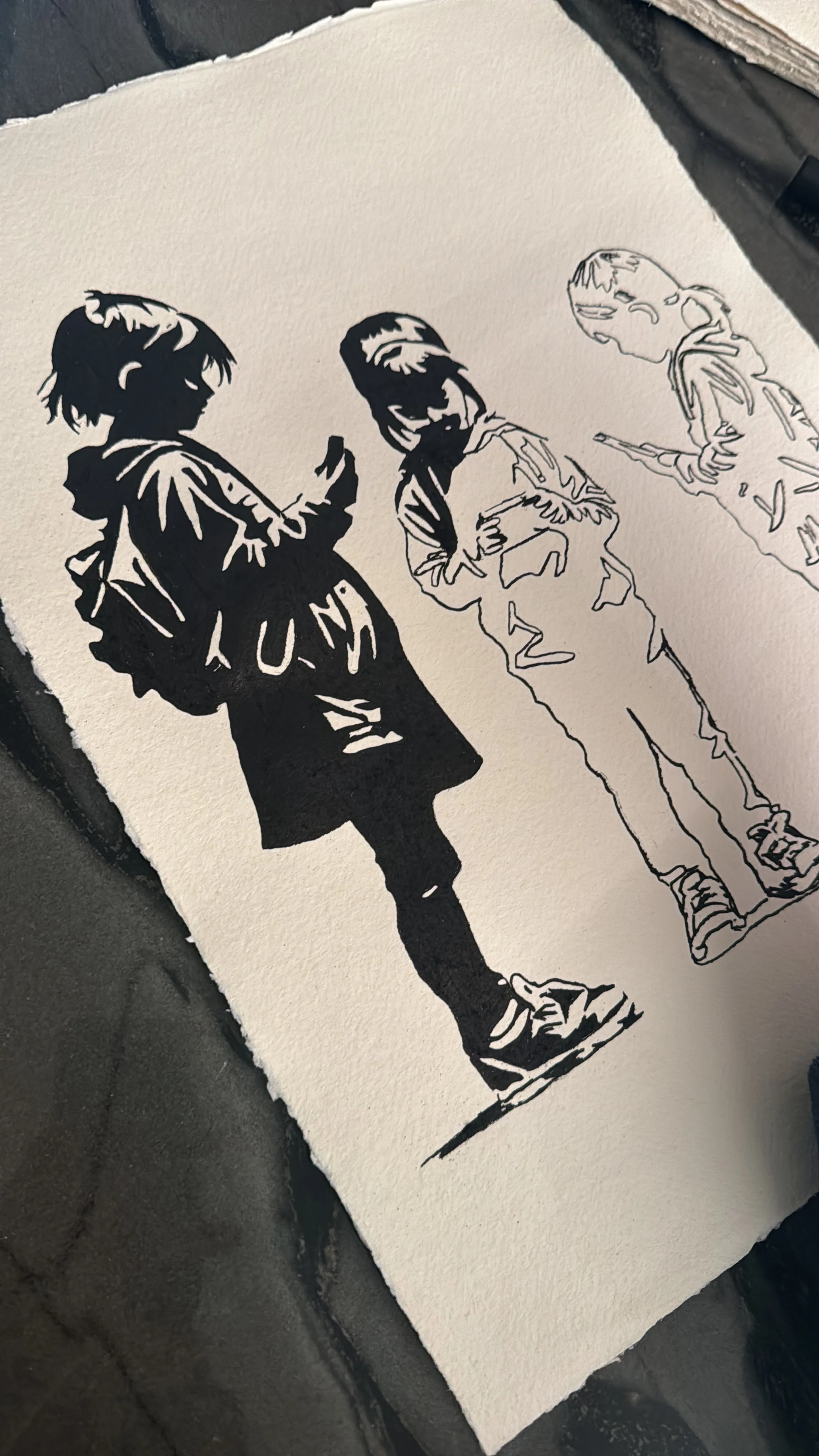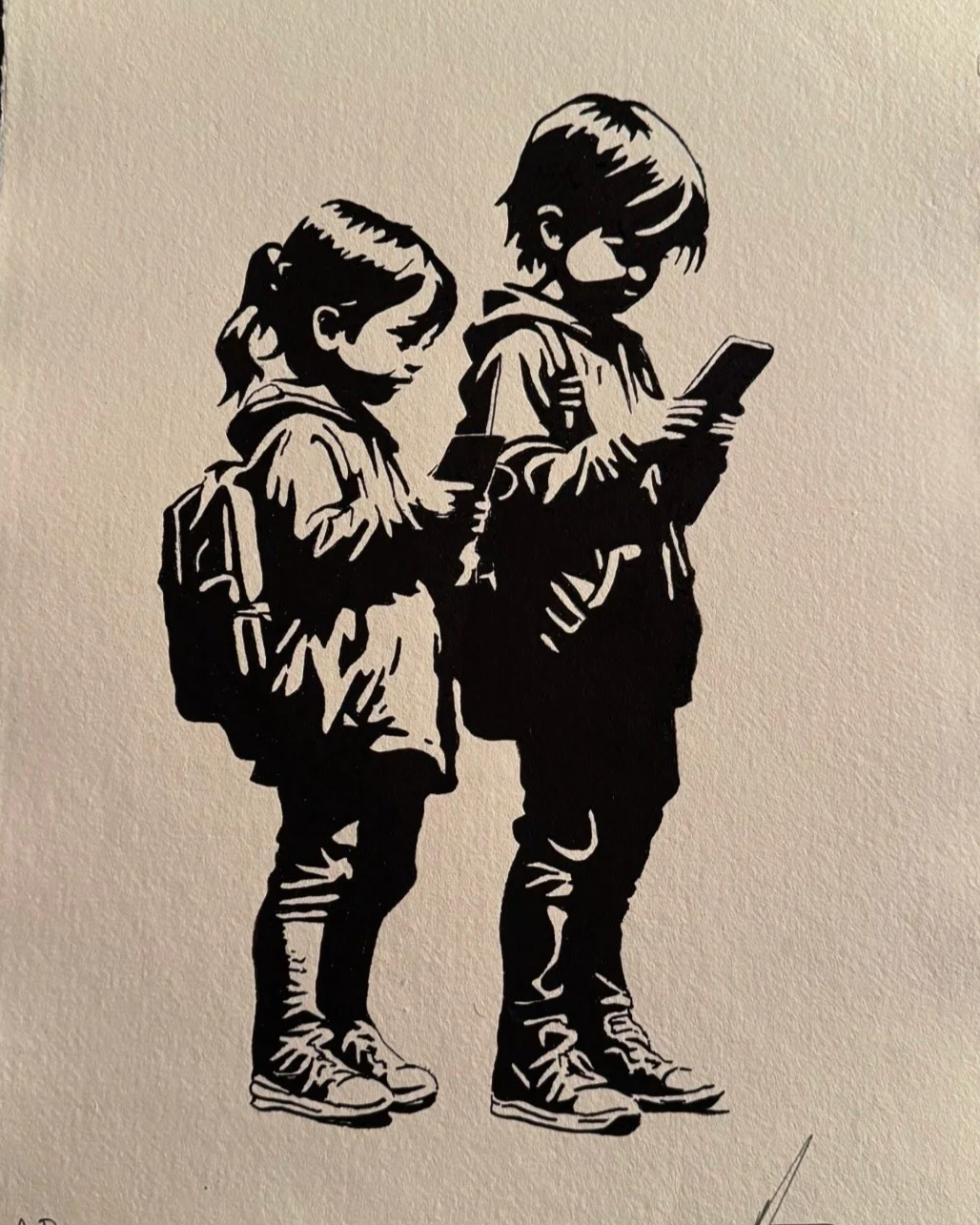Artist Proofs: Studies of Digital Absence
Acrylic-based ink on cotton Series of 12 original sketches on cotton paper (42 x 29.7 cm)
Completed 22nd October 2024, London.
This collection of twelve drawings marks a particularly intense period in my studio practice, weeks of observation, sketching and refinement that culminated on 22 October 2024. Each piece began as a fleeting mental image, something I had witnessed repeatedly across London over the years: children on their way to school, backpacks hanging, eyes lowered, fingers scrolling, absorbed in the glowing silence of their devices. These small moments, so ordinary and repetitive, began to haunt me. I realised I needed to capture them before they disappeared like everything else that happens in a distracted world.
The drawings are executed in acrylic-based ink on cotton paper, their simplicity deceptive. The black silhouettes are thick, deliberate, and full of weight, the kind of darkness that feels both physical and emotional. I wanted the figures to feel carved out of absence, sculpted by shadow rather than light. Each line carries the immediacy of a sketch, yet the precision of something rehearsed over and over until it becomes its own language.
The decision to use cotton paper was crucial. Its texture holds the ink in a way that feels permanent, yet tender, almost like skin. These are, in a sense, portraits of a generation, but they are also self-portraits of our collective condition: small, distracted bodies tethered to a luminous rectangle that both connects and confines.
Many of the children are drawn with schoolbags, a detail that, to me, carries great symbolic weight. The bag, once a vessel for books, pencils, letters and imagination, now accompanies a child whose real-world fits in their hand. It’s a subtle image, but it encapsulates the shift I keep returning to in my work: from tactile learning to digital submission, from wonder to withdrawal.
Initially, I thought of these drawings merely as rehearsals, studies for larger paintings, murals, and future stencils. But as the series evolved, I began to see them differently. Together, they formed a kind of silent chorus, each one echoing the other yet entirely singular. They became, unintentionally, a collection of one-of-one artist proofs, the distilled essence of my process and message. I now regard them as foundational works within my broader body of art: the raw, unfiltered genesis of a visual language that continues to expand.
What fascinates me about these studies is how they balance intimacy and universality. Each child is drawn from memory, no model, no photograph, yet they feel immediately recognisable. That anonymity makes them powerful: they could be anyone’s children, anywhere, at any moment. And that’s precisely the point.
When I look at them now, I see a rehearsal that became revelation. These images, once intended as steps toward something larger, have found their own completeness. They are twelve mirrors reflecting the same truth from different angles, a generation connected to everything except themselves.
I’ve chosen to keep them together as a cohesive set, though I am open to placing them in the hands of the right collector, someone who understands not just the aesthetic but the message, the urgency, the fragility that underpins this work. They belong to a wider collection born from the same surge of creative energy, a period where every stroke felt like a small act of resistance against indifference.
Artist Proofs: Studies of Digital Absence stands as both documentation and meditation, the disciplined rehearsal of a message I can no longer stop communicating: that presence, once lost to the screen, may never fully return.
